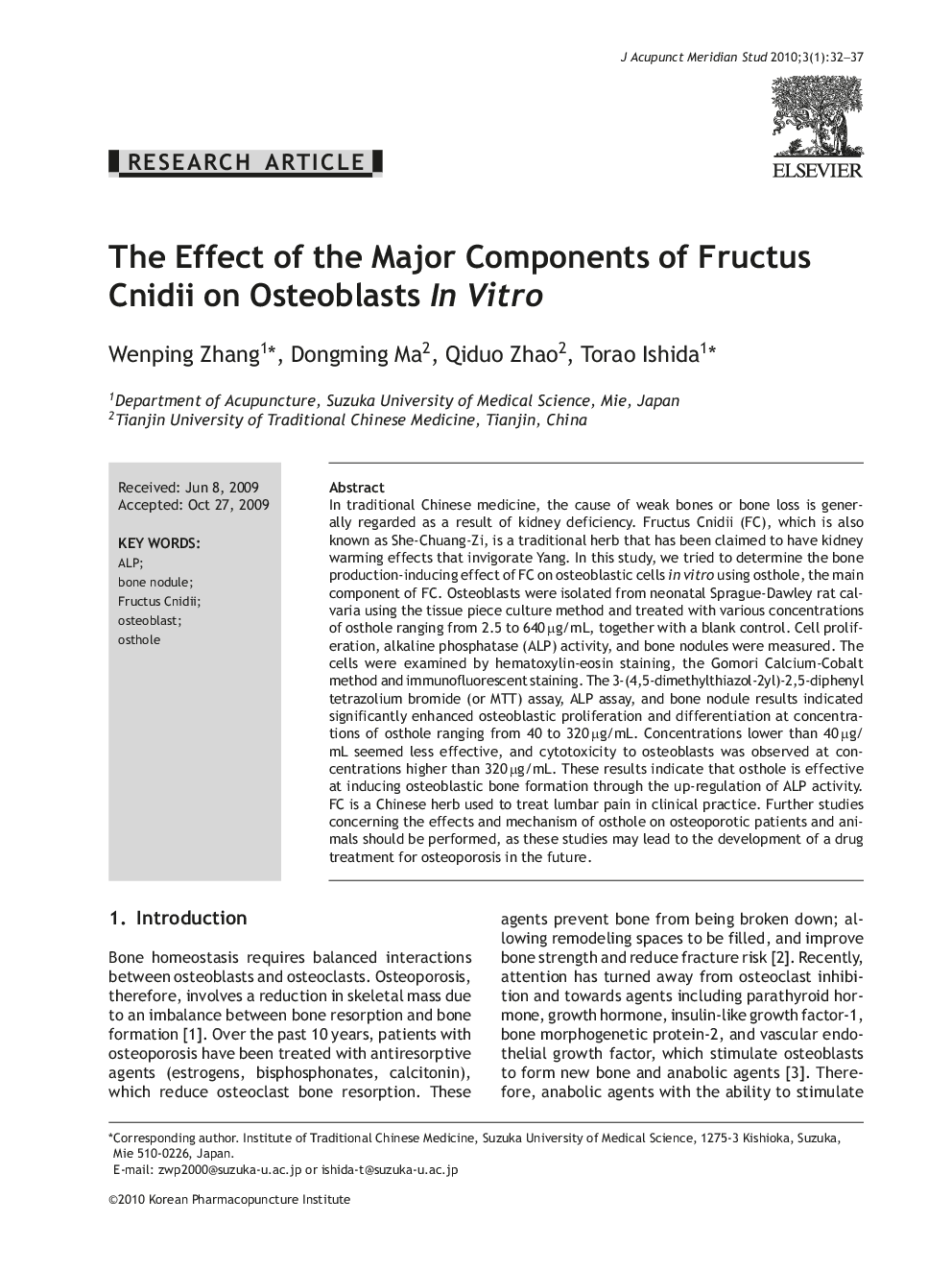| Article ID | Journal | Published Year | Pages | File Type |
|---|---|---|---|---|
| 3098892 | Journal of Acupuncture and Meridian Studies | 2010 | 6 Pages |
In traditional Chinese medicine, the cause of weak bones or bone loss is generally regarded as a result of kidney deficiency. Fructus Cnidii (FC), which is also known as She-Chuang-Zi, is a traditional herb that has been claimed to have kidney warming effects that invigorate Yang. In this study, we tried to determine the bone production-inducing effect of FC on osteoblastic cells in vitro using osthole, the main component of FC. Osteoblasts were isolated from neonatal Sprague-Dawley rat calvaria using the tissue piece culture method and treated with various concentrations of osthole ranging from 2.5 to 640 μg/mL, together with a blank control. Cell proliferation, alkaline phosphatase (ALP) activity, and bone nodules were measured. The cells were examined by hematoxylin-eosin staining, the Gomori Calcium-Cobalt method and immunofluorescent staining. The 3-(4,5-dimethylthiazol-2yl)-2,5-diphenyl tetrazolium bromide (or MTT) assay, ALP assay, and bone nodule results indicated significantly enhanced osteoblastic proliferation and differentiation at concentrations of osthole ranging from 40 to 320 μg/mL. Concentrations lower than 40 μg/ mL seemed less effective, and cytotoxicity to osteoblasts was observed at concentrations higher than 320 μg/mL. These results indicate that osthole is effective at inducing osteoblastic bone formation through the up-regulation of ALP activity. FC is a Chinese herb used to treat lumbar pain in clinical practice. Further studies concerning the effects and mechanism of osthole on osteoporotic patients and animals should be performed, as these studies may lead to the development of a drug treatment for osteoporosis in the future.
